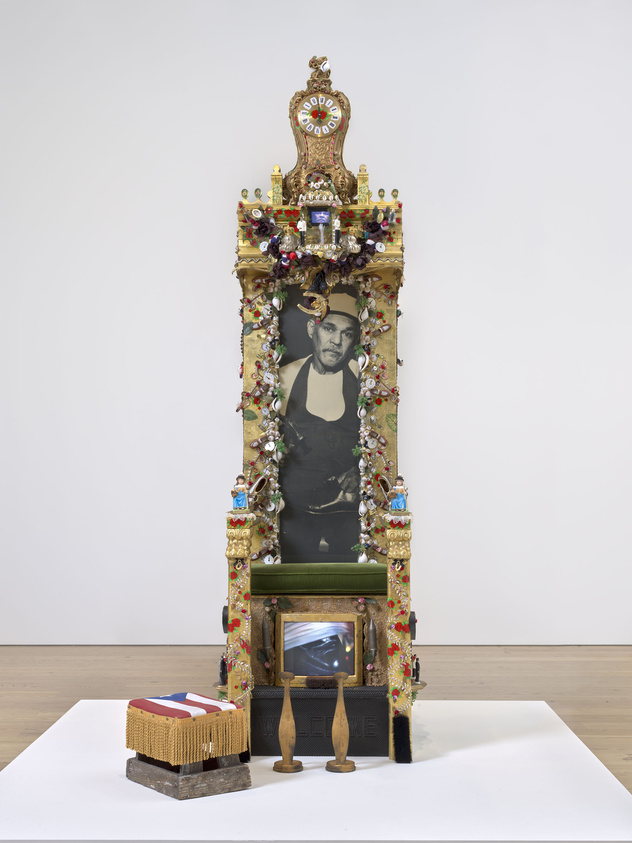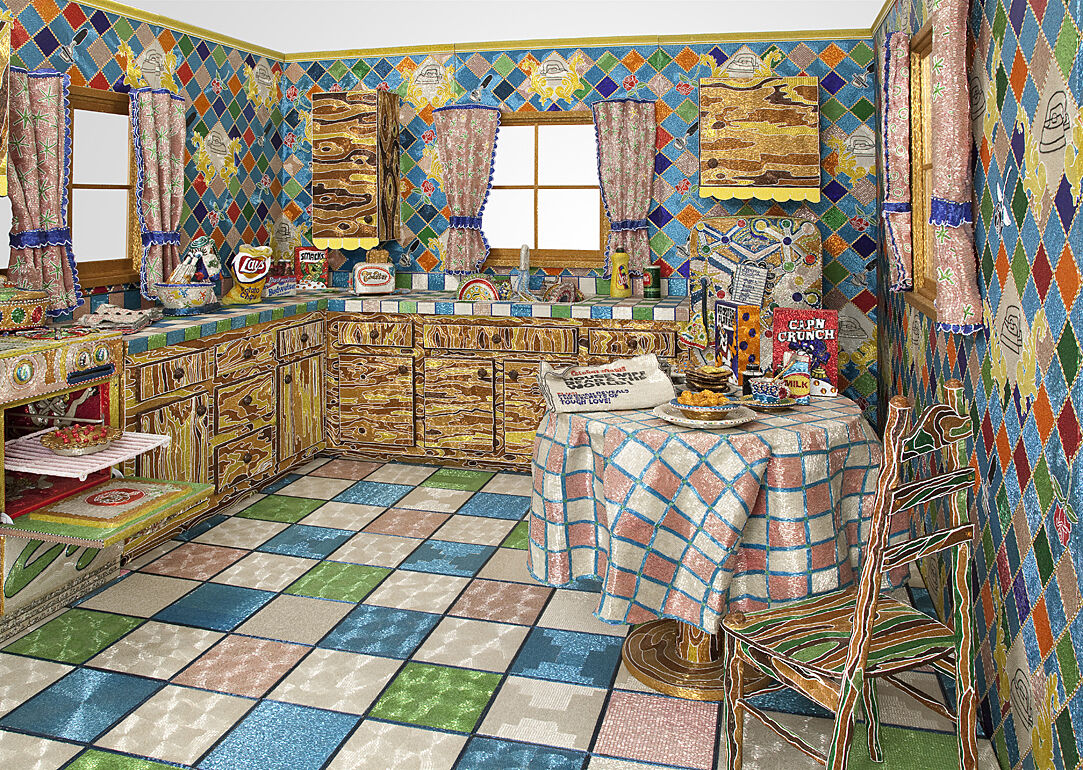Not on view
Date
1993
Classification
Installations
Medium
Two-channel video installation, color, silent, 5 sec. and 41 sec. looped, with two monitors, painted wood, rubber, fabric, glass, ceramic, shells, painted cast iron, hand-tinted photographs, paper, and mirror
Dimensions
Dimensions variable Aspect Ratio: 4:3
Accession number
93.100
Credit line
Whitney Museum of American Art, New York; purchase, with funds from the Painting and Sculpture Committee
Rights and reproductions
© artist or artist's estate
Visual description
Pepón Osorio’s Angel: The Shoe Shiner consists of a chair with an elongated back. The artist covered the chair in gold leaf and adorned it with various trinkets, including Virgin Mary figurines, ceramic baby shoes, shells, and painted roses. A life-size, black and white photograph of Angel, the shoe shiner, from the waist-up is at the center of the seat’s backrest. He looks out towards the viewer with a neutral expression in his face, and he holds one shoe in his left hand. When the sculpture is viewed from behind, the viewer sees Angel's back, onto which light-pink silk roses are adhered in the shape of wings.
The sculpture is Osorio’s tribute to Angel, a shoe shiner, whom the artist frequented for years. Osorio is known for his intricate installations that are inspired by the relationships he forms in his communities. Conversations are an essential part of the artist’s process for many of his works.
With this sculpture, Osorio created a throne for Angel, and in doing so reversed the usual power dynamic between the shoe shiner and his clients. The artist also incorporated two looping videos into the front of the chair. At the top, a miniature monitor only a few inches wide plays footage of Angel spitting, while at the foot, a slightly larger monitor about a foot wide plays footage of a shoe being buffed. Positioned at the very top of the chair is a baroque-style clock. For Osorio, the nod to time is a reminder of the looming threat of gentrification that so many business owners like Angel were facing in their neighborhoods when this sculpture was made, a threat that persists today.
Two wooden foot supports rest on the floor in front of the throne, and situated nearby is the shiner’s stool, which the artist upholstered with the Puerto Rican flag, with golden fringe along its edge. Osorio moved from Puerto Rico to New York in 1975 and his work draws on aspects of Nuyorican (New York Puerto Rican) aesthetics and culture.
Audio
-
0:00
Pepón Osorio, Angel: The Shoe Shiner, 1993
0:00
Pepón Osorio: Me llamo Pepón Osorio y vivo en Filadelfia.
Hice Angel: The Shoe Shiner en 1993. Y en ese entonces lo que más me interesaba era conectar con la gente de mis alrededores, cerca de donde vivía.
Y entonces me encontré con este lustrabotas. Se llamaba Ángel, y solíamos conversar muchísimo, algo que es básicamente parte de todo mi proceso creativo. Mi metodología siempre fue dedicarle mucho tiempo a hablar con la gente. Después de eso, las metáforas comenzaban a fluir, y luego las traducía en obras tridimensionales.
Y Ángel tenía algo que era muy interesante, que era una especie de relación con el poder. Él siempre estaba a los pies del cliente, y el cliente siempre estaba por encima de él. Lo puse en el trono como una manera de crear alguna especie de equidad en esa relación de poder.
Narrador: En el video al pie del trono, vemos a Ángel utilizando su saliva para lustrar los zapatos de los clientes. Para Osorio, este acto también establecía otro equilibrio en la jerarquía de poder. El trono está cubierto de materiales que el artista veía como atributos del lustrabotas.
Pepón Osorio: Varios de los materiales que están incrustados en la superficie los conseguí en tiendas de regalos de la zona. Algunos son objetos específicos para bodas y fiestas de quinceañeras. Otros materiales los conseguí en una tienda de 99 centavos.
Hay un reloj en la parte más alta. Es un elemento de tiempo, y representa cómo Ángel se estaba quedando sin tiempo ya que, en ese momento, tenía mucho miedo de ser desplazado y quedarse sin trabajo, algo que de hecho sucedió. Fue debido a la gentrificación del vecindario.
-
0:00
Pepón Osorio, Angel: The Shoe Shiner, 1993
0:00
Pepón Osorio: My name is Pepón Osorio and I live in Philly—Philadelphia.
So, Angel: The Shoe Shiner was done in 1993. And what I was most concerned [about], at that time, was connecting with people in my vicinity near the place where I lived.
And, so, I came across this shoeshiner. His name was Angel and we had many, many conversations, which is basically part of my whole process of making work. My methodology is that I spent a lot of time talking. And then, after that, sort of metaphors come in, and then I translate them into three-dimensional pieces.
And Angel had this relationship, which was very interesting, a co-relationship with power. He was always at the bottom of the client, and the client was always above him. I put him on the throne as a way of creating some sort of equity in that power relationship that is happening.
Narrator: In the video at the base of the throne, we see Angel using his spit to shine his client's shoes. For Osorio, this act also rebalanced the hierarchy of power. The throne is covered in materials that he thinks of as attributes of the shoeshiner.
Pepón Osorio: I gather a lot of the materials that encrusted the surface from the nearby novelty stores. Some of them are specifically for weddings and quinceañeras, which is the fifteen instead of sweet sixteens. Some of them, I got them at a 99-cent store.
Time, the clock is on the very, very top. And it's an element of time, and how he was running time because at the same time he was very scared that he would be thrown out—which, in fact, it happened—out of his business, because of the gentrification in the neighborhood.
Installation photography
-
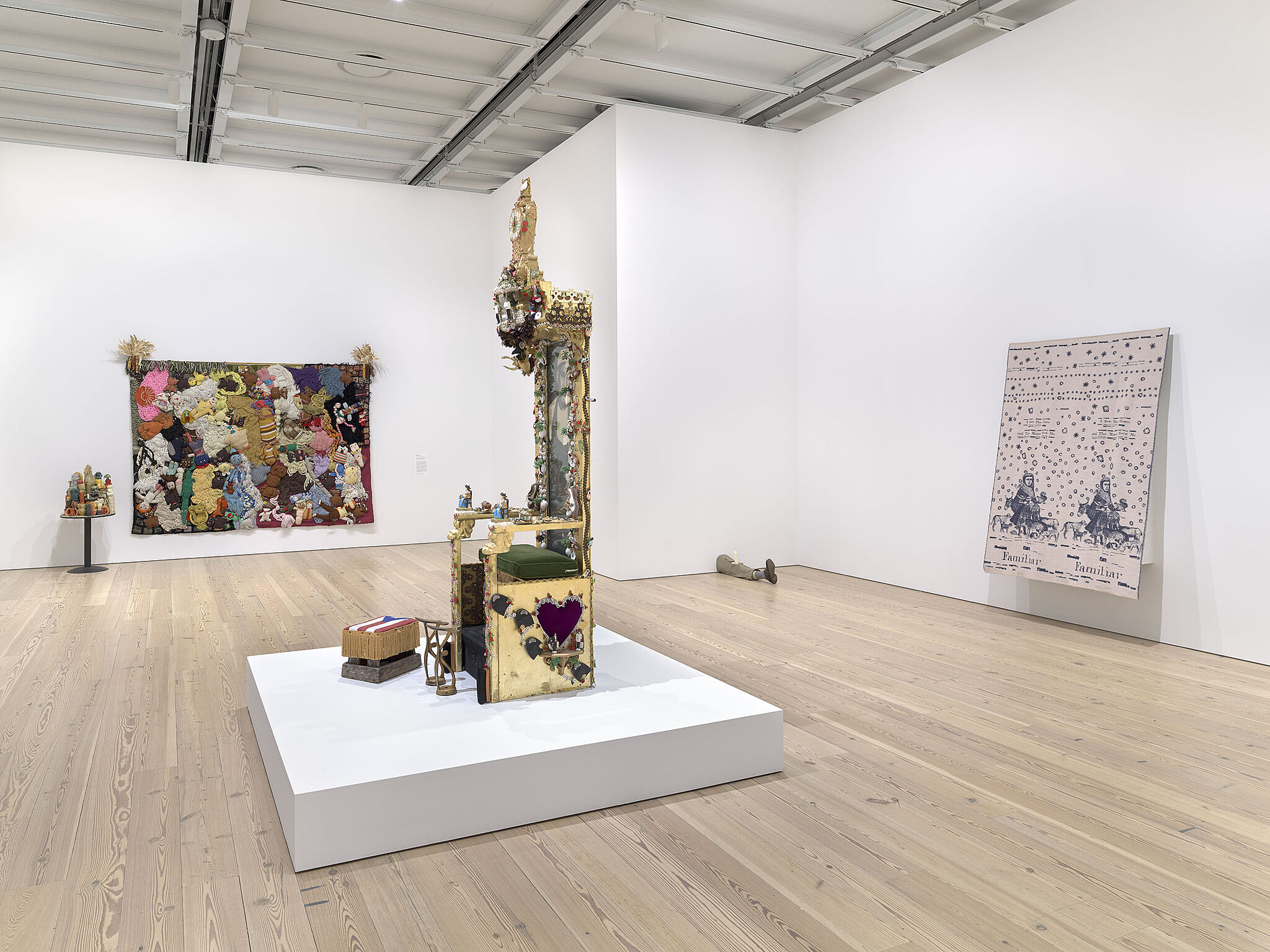

Installation view of Making Knowing: Craft in Art, 1950–2019 (Whitney Museum of American Art, New York, November 22, 2019–January 2021). From left to right: Mike Kelley, More Love Hours Than Can Ever Be Repaid and The Wages of Sin, 1987; Pepón Osorio; Angel: The Shoe Shiner, 1993; Robert Gober, Untitled, 1991; Kiki Smith, Familiars, 2001–02. Photograph by Ron Amstutz
From the exhibition Making Knowing: Craft in Art, 1950–2019
-
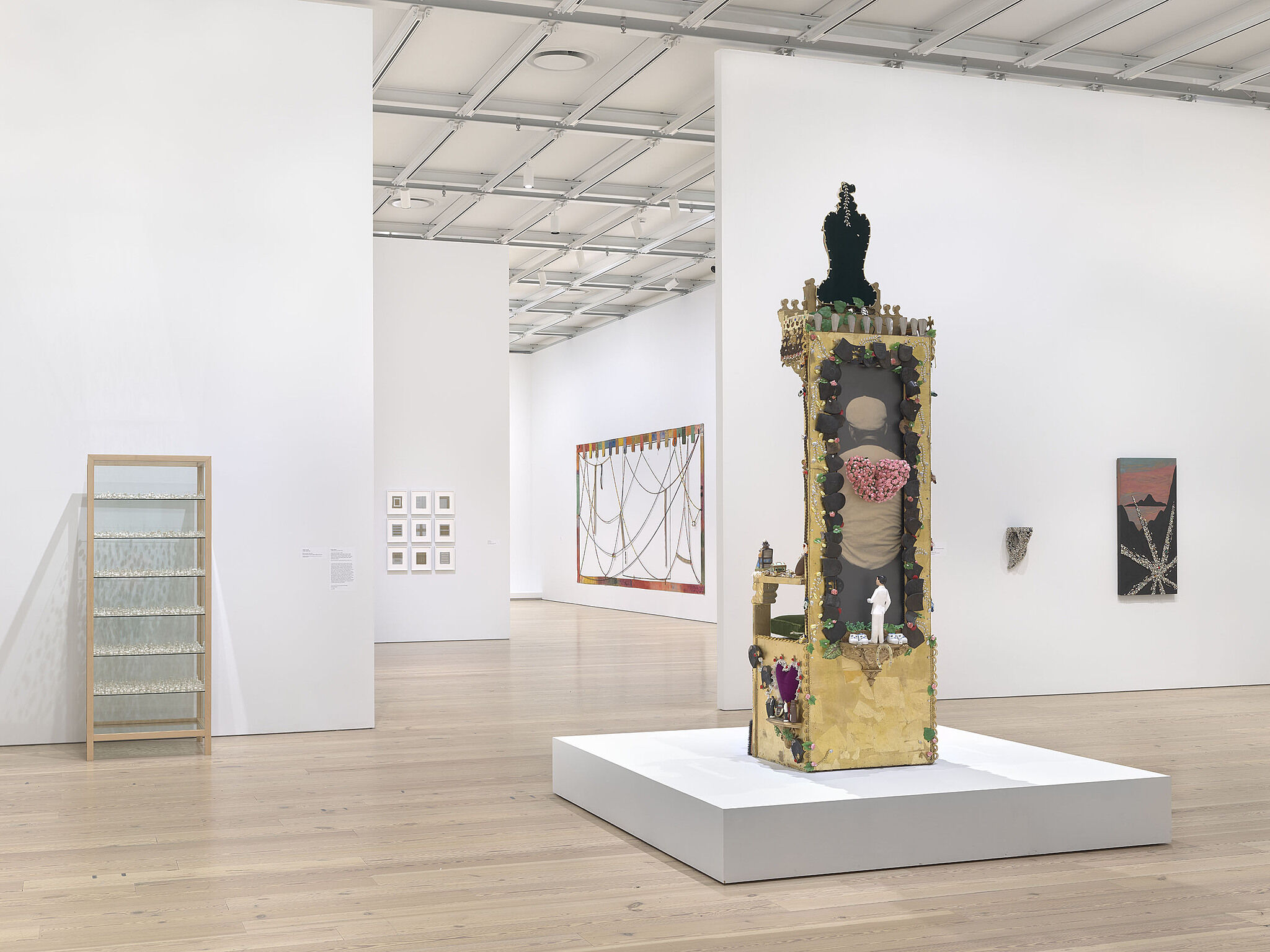

Installation view of Making Knowing: Craft in Art, 1950–2019 (Whitney Museum of American Art, New York, November 22, 2019–January 2021). From left to right: Charles LeDray, Milk and Honey, 1994–96; Elaine Reichek, Silver & Gold, 1976; Alan Shields, J + K, 1972; Pepón Osorio; Angel: The Shoe Shiner, 1993; Arch Connelly, Leaf, 1982; Arch Connelly, Personal Explosion, 1984. Photograph by Ron Amstutz
From the exhibition Making Knowing: Craft in Art, 1950–2019
-
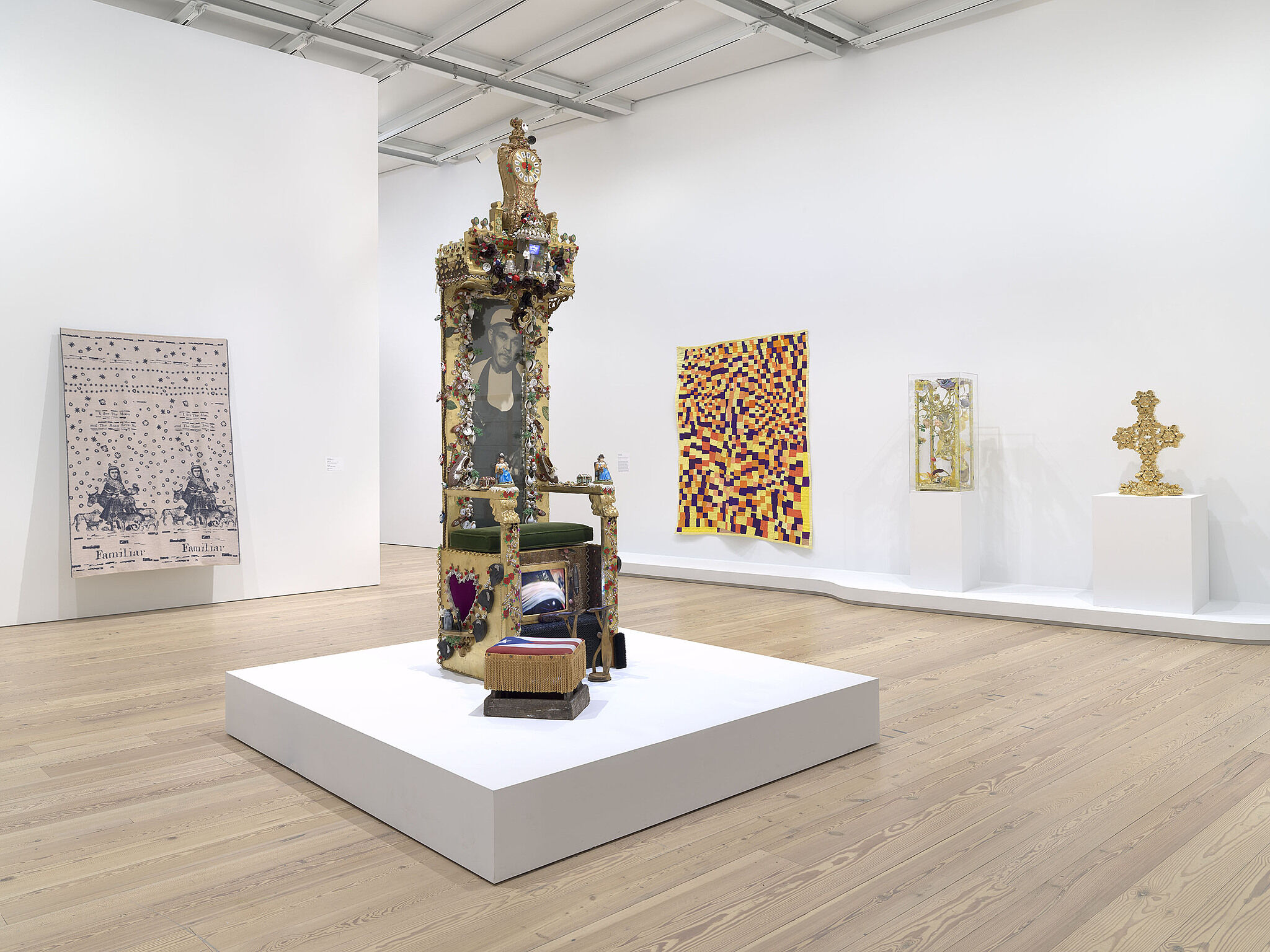

Installation view of Making Knowing: Craft in Art, 1950–2019 (Whitney Museum of American Art, New York, November 22, 2019–January 2021). From left to right: Kiki Smith, Familiars, 2001–02; Pepón Osorio; Angel: The Shoe Shiner, 1993; Rosie Lee Tompkins, Three Sixes, 1986; Thomas Lanigan-Schmidt, A Rite of Passage: The Velvet Cat Tail and the Silk Tiger Lily, 1987–88; John de Fazio, Crystal Meth Crucifix, 1999. Photograph by Ron Amstutz
From the exhibition Making Knowing: Craft in Art, 1950–2019
-
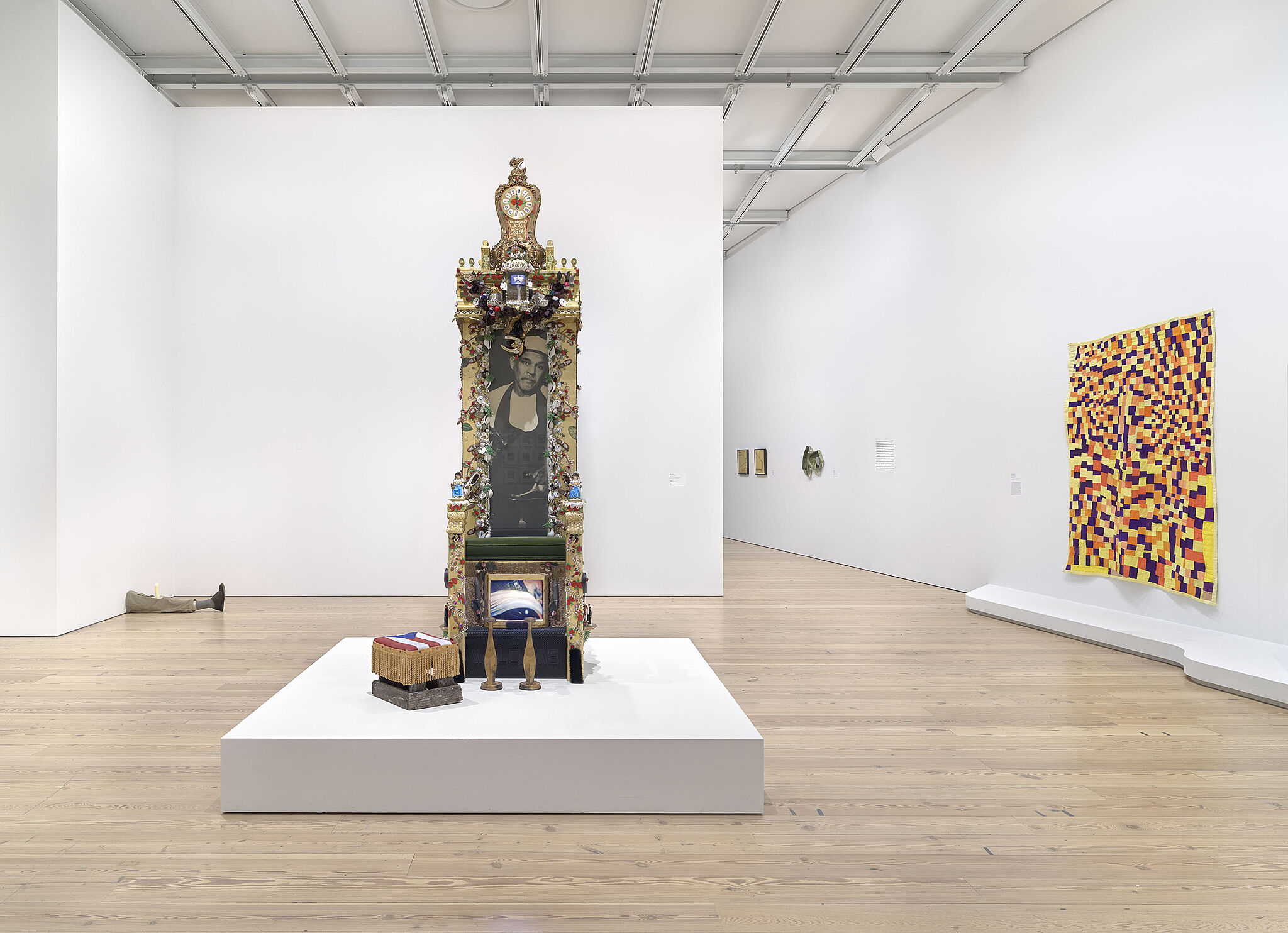

Installation view of Making Knowing: Craft in Art, 1950–2019 (Whitney Museum of American Art, New York, November 22, 2019–January 2021). From left to right: Robert Gober, Untitled, 1991; Pepón Osorio; Angel: The Shoe Shiner, 1993; Erica Baum, Hem Allowed, 2018; Erica Baum, Fold Coat, 2018; Erin Jane Nelson, Daufuskie Muscat, 2018; Rosie Lee Tompkins, Three Sixes, 1986. Photograph by Ron Amstutz
From the exhibition Making Knowing: Craft in Art, 1950–2019

